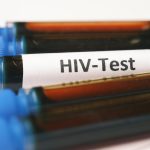Pacific El Niño phenomenon correlates with droughts in the country

The El Niño phenomenon that forms in the Pacific Ocean correlates with the droughts that occur in the Dominican Republic.
This is according to research carried out by engineer Fidel Perez, presented during the Research Week of the Pontificia Universidad Católica Madre y Maestra (PUCMM), under the name “Monitoring of droughts in the Dominican Republic based on the combination of Drought Indices and Hydrological Models.”
“The El Niño phenomenon, which is the anomaly in the sea surface temperature in that region of the Pacific Ocean, is only one indicator that so far has been observed to have a correlation with the decrease in rainfall in the Dominican Republic,” the specialist explained to Listín Diario.
As part of this research, which had funding of 15 million pesos from the National Fund for Innovation and Scientific and Technological Development (FONDOCYT), Perez, along with other researchers, monitored the droughts that have affected the country in recent years (2013-2016) and (2018-2019), and determine that almost all droughts in the national territory have correlated with these data.
“El Niño is measured every month, a monthly average is taken, and it is done continuously… The relationship is already more than demonstrated, the ideal is to know how we can use that to forecast them… If we know how long the drought will last we start to make contingency plans and take measures to protect the most vulnerable population and manage water systems,” explained Perez.
He indicated that to investigate drought, precipitation data is needed. However, there are not enough stations in the country to monitor statistics.
He specified that years ago, the National Institute of Hydraulic Resources (Indrhi) had more than 200 stations, but now they have decreased.
“If we don’t have data for many years, we can’t study the phenomenon well , and there we resort to satellite stations,” he said, adding that this satellite information has been used to reconstruct the past climate, to know the temperature month by month from 1950 to 2020.
USE OF ARTIFICIAL INTELLIGENCE
Artificial intelligence has been a key element in tracking information on droughts. According to Perez, these artificial neural networks help to discover algorithms and have been specifically helpful in predicting floods in the Yuna River and sometimes in the Yaque del Norte River.
However, they have submitted proposals to FONDOCYT to continue research on droughts or the link between telephone data and rainfall “because here we have more telecommunication towers than weather stations.”
As part of the proposal, which was rejected, it was proposed to place rain gauges on the telecommunication towers because “When it is raining, the cell phone signal drops because the rain interferes with the communication waves, and that is why the cell phone cannot be heard so well when it is raining…. To know how far away the towers can be placed so that the signal strength does not drop,” he said.
With this research, thousands of dollars could be saved on the radar.
“Basic, in-depth research has no place here in the Dominican Republic… The source of financing has to be from private organizations that have one purpose, or from state agencies that have another purpose, with the academy, not with this university, with all of them,” said engineer Silvio Carrasco, director of the Water Management Unit.
The experts commented that research centers should be financed in the country to study this and other topics in depth.
In addition, they propose that more young people should be interested in research because they would have more skills to handle software programs and discover and contribute to science.
















